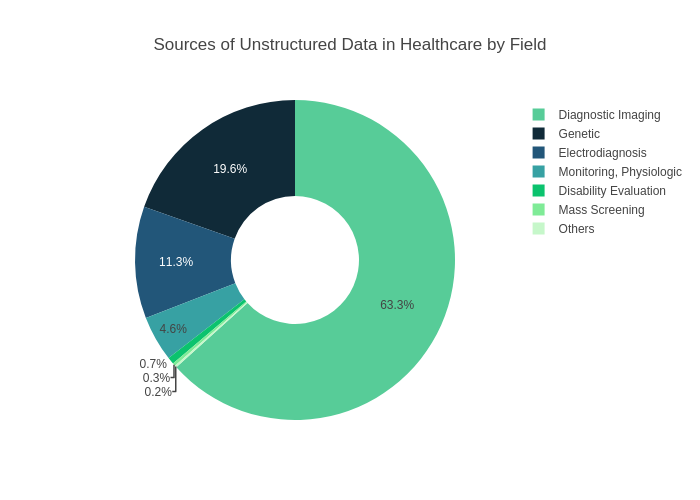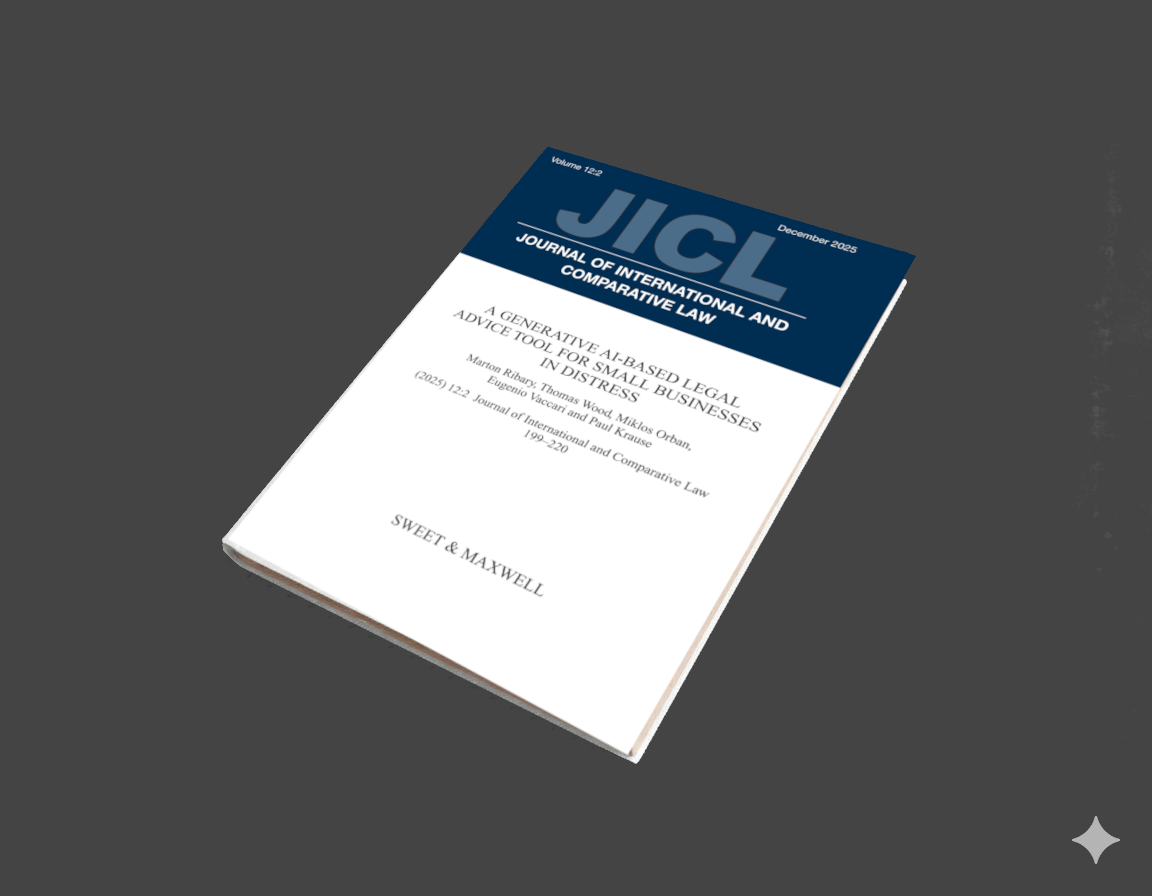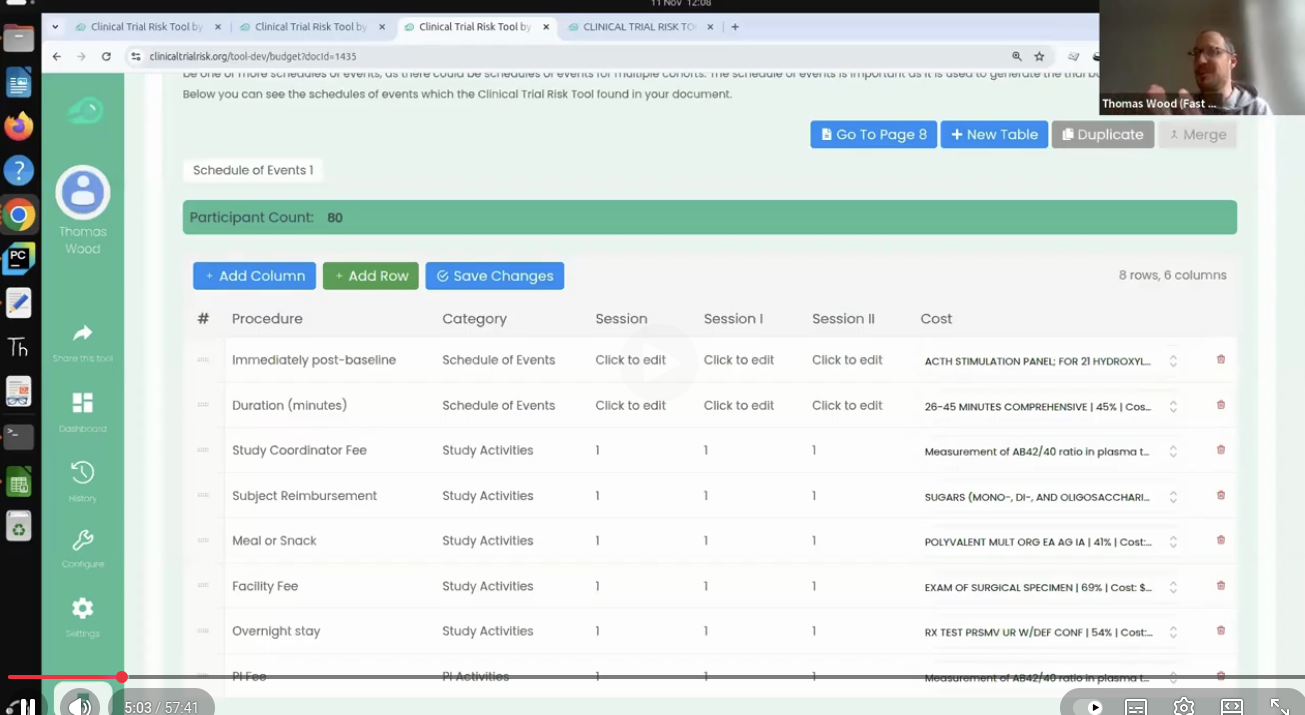
In today’s digital healthcare landscape, data plays a pivotal role. However, while medical records, patient feedback, and clinical research generate vast amounts of information, not all of it is easy to manage or analyze. In fact, the majority of this data is unstructured, making it difficult for traditional tools to process effectively.
This is where Natural Language Processing (NLP), a subset of Artificial Intelligence (AI), comes into play. NLP can efficiently sift through massive unstructured datasets—such as clinical notes or patient reviews—and extract valuable insights. With the rise of NLP tools, healthcare providers now have access to deeper knowledge, enabling them to enhance patient care and improve outcomes.
This article will explore how NLP is transforming the management of unstructured data in healthcare and revolutionizing the field.
To understand the importance of NLP in healthcare, let’s first distinguish between structured and unstructured data:
Structured data is highly organized and fits into predefined fields in databases, like spreadsheets or SQL tables. It is the foundation for many hospital management systems and enables quick access to essential patient information. Structured data is easy to store, retrieve, and analyze due to its tabular format. Because it follows a predefined structure, healthcare providers can quickly generate reports, conduct statistical analyses, and maintain regulatory compliance. For example, structured data allows hospitals to track patient visits, measure treatment outcomes, and submit insurance claims with minimal effort. However, structured data often provides a limited view of patient health by focusing on specific, quantifiable metrics. Deeper insights into patient well-being such as personal experiences, doctor observations, or detailed treatment responses—remain buried in unstructured data, which structured systems cannot fully capture.
Unstructured data, on the other hand, lacks a specific format or predefined structure. Around 80-90% of healthcare data is unstructured. This data often contains critical contextual insights—such as patient emotions, unique symptoms, or detailed physician observations—that structured data cannot capture. Traditional analytics tools struggle to process and analyze such information, leaving valuable knowledge untapped. This type of data is more difficult to process because it doesn’t fit neatly into rows and columns. Yet, ignoring it means missing opportunities to enhance patient care, improve diagnostics, and streamline hospital management. By unlocking insights from unstructured data, healthcare providers can personalize treatments, monitor trends, and make more informed decisions, ultimately leading to better patient outcomes.
| Aspect | Structured Data | Unstructured Data |
|---|---|---|
| Definition | Highly organized, fits into predefined fields in databases like spreadsheets or SQL tables | Lacks a specific format or predefined structure |
| Examples | - Patient demographic data (age, gender, ID) - Lab results (blood pressure, glucose levels) - Billing and insurance information - Appointment schedules - Medication records and treatment codes | - Clinical notes written by doctors - Patient feedback surveys - Radiology and pathology reports - Voice recordings and transcriptions - Research articles and case studies |
| Data Organization | Stored in a tabular, organized format for easy access and analysis | Exists in free-form text, audio, or images, making organization difficult |
| Ease of Analysis | Easy to retrieve, store, and analyze with traditional tools | Challenging to analyze without advanced tools like NLP |
| Usage in Reports & Compliance | Enables quick report generation, statistical analysis, and compliance tracking | Often overlooked in traditional systems but holds deeper, contextual insights |
| Limitations | Provides a limited view focused on quantifiable metrics, missing personal insights | Contains critical, context-rich information like patient emotions, observations, and unique symptoms |
| Healthcare Applications | Tracking patient visits, measuring outcomes, and submitting insurance claims | Improving patient care, personalizing treatments, monitoring trends, and enhancing diagnostics |
| Processing Requirements | Can be processed with basic analytics tools | Requires advanced processing techniques, such as NLP, to extract insights |
Why is unstructured data so challenging for healthcare providers? Here are some key reasons:
Ignoring unstructured data means missing out on critical patient insights. Consider the following scenarios:
These data sources contain rich, contextual information that can improve diagnosis, treatment plans, and overall healthcare outcomes. However, making sense of unstructured data is a challenge because it requires advanced tools and techniques to process and interpret meaning. This is where Natural Language Processing (NLP) becomes essential, enabling healthcare providers to unlock actionable insights from complex datasets.
Natural Language Processing (NLP) is a branch of Artificial Intelligence (AI) that focuses on enabling machines to understand, interpret, and respond to human language. In healthcare, *NLP systems analyze both text and spoken language to uncover meaningful patterns and insights that may be missed by traditional analytics tools. This helps healthcare providers make more informed decisions, improve patient care, and streamline operations.
NLP involves several core processes that transform unstructured data into structured, actionable information:
Tokenization:
Breaking down text into smaller units, such as words, phrases, or sentences. This is the first step in understanding the text’s structure.
Named Entity Recognition (NER):
Named Entity Recognition (NER) is identifying and classifying important entities in the text, such as patient names, medications, diseases, or procedures. This allows healthcare providers to quickly find relevant details.
Sentiment Analysis:
Sentiment Analysis assessing the tone and emotion behind text, such as in patient feedback or survey responses. This helps hospitals monitor patient satisfaction and address potential issues proactively.
Text Classification:
Text Classification is process of assigning categories or labels to text. For example, a clinical note may be flagged as “urgent” or “routine” to help doctors prioritize cases efficiently.
Dependency Parsing:
Understanding the grammatical structure of sentences by analyzing how words relate to each other. This helps NLP systems capture context and nuances within complex medical notes.
These processes work together to extract relevant insights from unstructured data, enabling healthcare providers to improve decision-making, detect patterns, and offer more personalized care. As NLP technology evolves, it is becoming a critical tool in managing the vast amounts of unstructured data generated in the healthcare industry.
Unstructured data in healthcare comes from various sources, each contributing unique insights. Here’s a breakdown of the primary sources:
Each source holds valuable insights that contribute to improved patient care, diagnosis, and research, especially when processed with NLP tools.
The following chart provides an overview of total contributions of different sources of unstructured data in healthcare by field:

Chart showing total contributions of different sources of unstructured data in healthcare by field. Image source: https://pubmed.ncbi.nlm.nih.gov/29507784/
Natural Language Processing (NLP) is a technology that enables machines to understand, interpret, and analyze human language. It allows healthcare organizations to extract meaningful insights from unstructured text and other data types, transforming raw information into actionable knowledge.
Here are some key ways NLP is transforming healthcare:
Physicians often record patient details during consultations in free-text clinical notes. These notes contain essential information, but without NLP, they remain inaccessible for large-scale data analysis. NLP tools can process these notes to extract critical data, such as:
This ensures that vital information is integrated into Electronic Health Records (EHRs) for better clinical decision-making. It also supports personalized care by providing healthcare providers with deeper patient insights.
Healthcare providers receive a significant amount of patient feedback through surveys, emails, and online reviews. Analyzing this feedback manually can be time-consuming. NLP-powered sentiment analysis helps organizations quickly determine the tone positive, neutral, or negative and identify key areas for improvement.
By acting on this feedback, providers can enhance patient satisfaction and address concerns in real-time, improving the overall healthcare experience.
Accurate coding is crucial for insurance claims processing. NLP tools automate the extraction of billing codes from unstructured medical records, ensuring that the right codes are applied. This process:
By minimizing coding errors, NLP ensures smoother claims processing and helps healthcare organizations maintain financial efficiency.
In pharmaceutical research, NLP systems scan thousands of scientific papers, clinical trial reports, and patents to identify patterns and trends. These insights accelerate drug development by:
NLP ensures that researchers can stay ahead of emerging diseases and improve drug discovery outcomes.
Recruiting patients for clinical trials is often a slow and labor-intensive process. NLP simplifies this by analyzing patient records and matching eligible candidates to relevant trials based on predefined criteria. This improves:
Faster recruitment helps trials progress smoothly, bringing new treatments to market sooner.
NLP can analyze unstructured patient records to identify subtle patterns that signal the onset of diseases, such as heart disease, diabetes, or cancer. These insights enable:
By predicting health risks early, healthcare providers can improve outcomes and reduce long-term treatment costs.
With its ability to process complex data and extract meaningful insights, NLP is transforming healthcare by improving efficiency, enhancing decision-making, and enabling personalized patient care. As the technology continues to evolve, its impact on healthcare will only grow, helping providers stay ahead in an increasingly data-driven world.
NER identifies and categorizes important terms within unstructured text, such as diseases, medications, patient names, or procedures. This helps healthcare providers efficiently search, analyze, and extract relevant medical information. For example, NER can automatically highlight a patient’s prescribed medication or diagnosis from clinical notes.
NLP models can classify medical documents into predefined categories, such as discharge summaries, lab reports, or radiology notes. This automation helps in organizing data and speeds up information retrieval, enabling healthcare staff to access relevant records quickly.
Topic modeling uncovers hidden themes and topics within large datasets. In healthcare, it can reveal common concerns in patient feedback, such as complaints about wait times or satisfaction with staff behavior. This insight helps providers identify trends and improve service quality proactively.
NLP tools can create concise summaries of lengthy documents, such as clinical reports or research papers. This allows healthcare professionals to grasp key information quickly, saving time and reducing the cognitive load of reviewing large volumes of text.
Sentiment analysis determines the emotional tone in patient feedback, such as whether comments are positive, neutral, or negative. By identifying negative sentiments early, healthcare providers can act proactively to address concerns and improve patient satisfaction.
These NLP techniques are transforming the way unstructured data is managed in healthcare, enabling faster decision-making, better patient care, and more efficient operations.
IBM Watson leverages NLP to analyze vast amounts of healthcare data, including medical literature, clinical trial reports, and patient records. This helps doctors make evidence-based decisions by providing personalized treatment recommendations and improving diagnostic accuracy. IBM Watson has been instrumental in oncology, offering tailored cancer treatment options based on the latest research.
The Mayo Clinic uses NLP tools to mine clinical data for research purposes, analyzing patient histories and medical records to identify patterns and trends. These insights allow the clinic to develop improved diagnostic protocols and treatment strategies. NLP also helps the Mayo Clinic enhance clinical documentation by automating the extraction of relevant medical information from unstructured sources.
Mount Sinai employs NLP algorithms to extract valuable insights from unstructured EHR (Electronic Health Record) data. These algorithms help detect early warning signs of chronic conditions, such as heart disease and diabetes, allowing for preventive care and early intervention. By identifying patterns across patient data, Mount Sinai improves patient outcomes and streamlines care management.
These real-world examples demonstrate how NLP is transforming healthcare, enabling organizations to extract actionable insights from vast amounts of unstructured data. As more healthcare providers adopt NLP technologies, the potential for enhanced diagnostics, personalized treatments, and improved patient care will continue to grow.
Managing unstructured data poses several challenges for healthcare providers:
Despite these challenges, unstructured data holds the key to better care, personalized treatment, and operational efficiency. NLP tools can address these challenges by transforming unstructured data into actionable insights.
The use of NLP in healthcare offers several key benefits:
The adoption of NLP in healthcare is just beginning. As AI technology evolves, NLP systems will become even more advanced, with the ability to:
The integration of NLP with other technologies, such as Machine Learning (ML) and IoT (Internet of Things), will create a more connected and efficient healthcare ecosystem.
Unstructured data is the hidden treasure of the healthcare industry. While it may seem chaotic and difficult to manage, it contains valuable insights that can transform patient care, streamline operations, and accelerate research. Natural Language Processing (NLP) is the key to unlocking these insights. By automating the analysis of unstructured data, NLP helps healthcare providers deliver better outcomes, improve patient satisfaction, and stay ahead of emerging trends.
The journey of integrating NLP into healthcare is still evolving, but the potential benefits are enormous. As technology advances, NLP will play an increasingly vital role in making healthcare smarter, more efficient, and more patient-centric. The future is bright—by embracing NLP, the healthcare industry can turn unstructured data into actionable knowledge, improving outcomes for patients and providers alike.
Dive into the world of Natural Language Processing! Explore cutting-edge NLP roles that match your skills and passions.
Explore NLP Jobs
How can you predict customer churn using machine learning and AI? In an earlier blog post, I introduced the concept of customer churn. Here, I’d like to dive into customer churn prediction in more detail and show how we can easily and simply use AI to predict customer churn.

A generative AI-based legal advice tool for small businesses in distress We are pleased to announce the publication of our paper A generative AI-based legal advice tool for small businesses in distress, in collaboration with an interdisciplinary team based in the UK and Hungary.

Thomas Wood presents the Clinical Trial Risk Tool before the November meeting of the Clinical AI Interest Group at Alan Turing Institute The Clinical AI Interest group is a community of health professionals from a broad range of backgrounds with an interest in Clinical AI, organised by the Alan Turing Institute.
What we can do for you